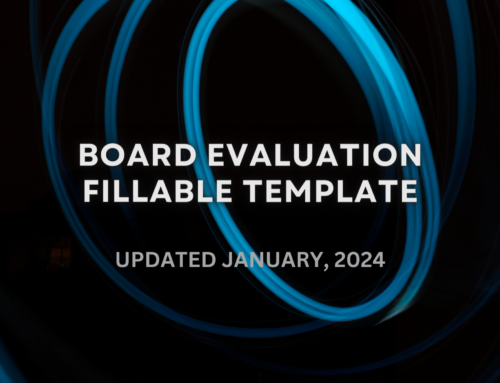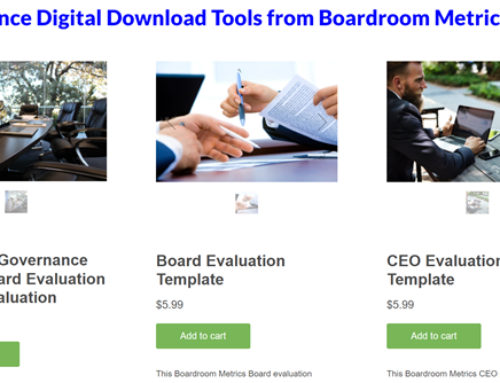How to properly provide training and guidance for new directors
What does it take to create a successful non-profit board training event? How can training, or “on-boarding events”, be beneficial to those who attend them? And, will board members remember and apply the key takeaways discussed?
 I love to hear about on-boarding experiences that are impactful, as well as those that people dreaded sitting through. Many professional organizations require a certain amount of continuing education credits each year, but directors of organizations are at the discretion of the chair and the culture of the charity in terms of the training requirements for board members.
I love to hear about on-boarding experiences that are impactful, as well as those that people dreaded sitting through. Many professional organizations require a certain amount of continuing education credits each year, but directors of organizations are at the discretion of the chair and the culture of the charity in terms of the training requirements for board members.
Upon arrival, new directors are typically greeted by an avalanche of documents—including charters, reports, and financial statements. Even for the most seasoned governance experts and veteran directors, reading and processing this information presents a challenge.
For those who are stepping up to their first board assignment, it’s a particularly daunting prospect. With the advent of digital documents, you can load much of this onto a disc or you can store the information in a secure portal for those who have permission to access the information.
The same steps used to onboard or train new senior staff can be applied to new members of your board of directors. Orientation shortens the learning curve and reduces the time required for you to receive invaluable advice about issues facing your organization. Many board directors have experience from previous boards, so their learning curve is much less than what a new employee would experience.
While there are many ways to feed new board members with knowledge, you may want them to know the processes and procedures of your charity before the legal governance essentials of being a director. With a number of new legislative changes, material provided will require some extra reading time before attending your board meetings.
Orientation
If you have served on a board of directors, how were you oriented? What type of orientation would you like to see upon joining a board of directors?
Directors need to understand your organization and what their responsibilities are before they can be fully effective. Director orientation typically includes and expands on the information given to prospective directors, such as:
- an overview of the organization
- activities, programs and stakeholders
- introductions to select staff and visits to locations
- information on board and committee charters
- director role position descriptions
- the organization’s approach to governance
- the fiduciary responsibilities of Non-Profit Organization directors
Experience
On-the-job experience is how most directors learn to be effective board members. The biggest single experience factor is usually the ability of the chairs to lead the board and committees, conduct effective meetings, and create an appropriate culture of challenge and support.
Steps Before your first meeting
 Here are five steps that I have found to be helpful when onboarding a new board member:
Here are five steps that I have found to be helpful when onboarding a new board member:
- Assign a board buddy or coach. It can be another board member or a senior member of your staff.
- Have them visit your office and locations where services or programs are delivered. This can happen early in the recruitment process or soon after they have joined the board.
- Provide recommendations on educational events. As a not-for-profit (NFP) governance consultant, I stress the importance of consistent, quality education to my clients and the executive directors/CEOs of the boards I serve on. For new and long-serving board members, your organization’s issues and specific NFP focus is invaluable information.
- Provide a list of books, publications, and websites relevant to your organization and your specific NFP focus as well as the constituents you serve.
- Provide a board manual. The board manual should include all the information a board member may need. Don’t assume the information provided during the recruiting process has been retained or organized in one place.
Ultimately, the purpose of onboarding is to ensure that volunteer board members have the knowledge, skills, and values to continually learn, improve, and succeed. On-boarding is an ongoing learning process that begins with the recruitment and selection of incoming board members and continues throughout the year.
Finally (for the board), just act. If your board members are committing to spend their precious time in a training event, make it worth the effort. Take that list of follow-up tasks and act on them. Incorporate what you have learned into meetings. Identify aspects of the topic where you need additional information or deeper understanding; and assign board members who can act as peer teachers, exploring and sharing what they have learned. Find meaningful ways to improve your governance practice using what you have learned as the foundation.
The more you adopt the effective approaches of a successful and professional NFP board, the better you will serve the purpose of your organization.

[/fusion_builder_column][/fusion_builder_row][/fusion_builder_container]







Leave A Comment